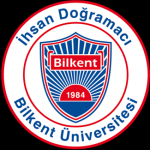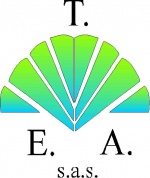Background
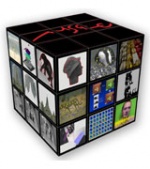 |
One important achievement of the Muscle group is the Muscle Network of Excellence, partially funded by the European Commission (FP6-507752, 1 March 2004 - 29 February 2008), managed by ERCIM and coordinated by Eric Pauwels (CWI, NL) and Nozha Boujemaa (INRIA, F) |
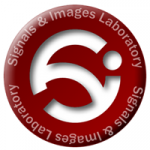 |
The Signal & Images Lab at ISTI-CNR (SI Lab) is working in the fields of signal processing, image understanding and artificial vision. Sensorial information is increasing its importance in both our everyday lives and the most advanced technological and scientific contexts. In particular, visual and audio information is becoming the most significant part of the global information to be processed, understood and manipulated. Our general goal is to increase the knowledge in signal processing, image understanding and artificial vision. This will be achieved by studying and developing models, methods and machines for the formation, processing, analysis and recognition of images and signals, and by applying them to several areas of scientific and technological interest. |
 |
The AYIN project-team (Ayin) is located at INRIA Sophia-Antipolis Méditerranée and aims to provide image processing tools to aid in the solution of problems arising in a wide range of concrete applications in Earth observation and cartography, for example cartographic updating, land management, and agriculture, while at the same time advancing the state of the art in the image processing methods used to construct those tools. An important recent theme, for example, is the incorporation of geometric information into stochastic and variational techniques, in the probabilistic case via the use of stochastic geometry, and in the variational case via the use of higher-order active contours. |
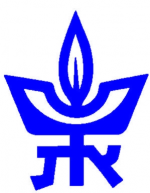 |
TAU-VISUAL specializes in the extraction and processing of visual information from video and still images. The group has substantial expertise in the use of variational methods to solve fundamentally difficult problems, such as restoration, registration and segmentation of images and video. Typical application domains include medical image analysis, image retrieval, video analytics, environmental monitoring and 3D image acquisition. |
 |
The Computer Vision and Multimedia Laboratory (CVML ) of the University of Geneva is divided into three groups and carries out research in multimedia data processing, multimedia data management and security, as well as in multimodal human-machine interaction. Content-based Visual Indexing and Retrievalgroup: develops strategies for the efficient indexing retrieval and exploration of large multimedia databases. Stochastic Information Processing group: studies various aspects of information theory and statistical (stochastic) information analysis and processing. Multimodal Interaction group: studiesvarious forms of interaction between humans, computers, and environment. Some considered interaction modalities are haptic, auditory, and based on physiological signals. Current developments concern: affective state determination and emotion recognition and their use for affective computing, multimodal interaction, brain-computer interfaces, mobility aids for sight handicapped people,object identification and authentication based on unclonable object features in large nonstructured databases, indexing and retrieval in very large multimedia databases, privacy preserving search, indexing and multiclass classification. |
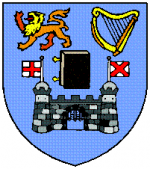 |
The School of Computer Science and Statistics in Trinity College Dublin has two collaborating groups, GV2 and Statica, that carries out activities on multimedia data (e.g. images, video and sound), sensor network data (e.g. road trafic, communications networks, camera network, motion capture) and environmental data (e.g. weather). STATICA focuses on Bayesian inference to solve statistical problems that arise in computer science, information systems and telecommunications focusing on developing statistical techniques to analyse large and complex data. GV2, the Graphics Vision and Visualisation group, has expertises in computer graphics, computer vision and all aspects of visual computing. GV2 was formed in 2006 with the integration of two longstanding TCD research groups: the Image Synthesis Group [ISG], established in 1993, and the Computer Vision and Robotics Group [CVRG], which was established 1983. |
 |
ARMINES is a non-profit French association which acts as the industrial interface serving engineering schools. CMM is a joint research laboratory of ARMINES and MINES ParisTech. Since the CMM was founded in 1967, it has contributed to the growth and dissemination of the theoretical and algorithmic corpus of mathematical morphology, through a very broad field of applications, thereby providing a rich experimental terrain for the development of new concepts and tools. For 40 years now, the CMM has been developing a powerful theoretical framework for image processing, called Mathematical Morphology. The CMM has acquired a leading position in the fields of mathematical foundations of the theory, efficient algorithms design, resolution of applications involving image processing, development of multimedia applications, and specific hardware development. The CMM has capitalized its expertise through common software libraries, creating a synergy between all applications in which the CMM is involved. These libraries provide advanced tools for filtering, segmentation, feature extraction, hyper-spectral image analysis and 3D point cloud analysis.
contact : Beatriz.Marcotegui@mines-paristech.fr |
 |
The research group "Visual Information Processing" consists of members of the University of Granada and the University of Jaén, from complementing fields as mathematics, statistics, computer science and physics, we carry out research on image restoration and enhancement, superresolution from compressed and uncompressed stills and video sequences, information retrieval from image and video databases, extraction of 3D information from video sequences for multimedia applications, tracking algorithms and optical flow, visual-statistical approach to multi-scale multiorientation representation models, computational photography, compressive sensing, active learning, fuzzy image processing, image classification and pattern recognition and multispectral image processing. |
| [[Image: |150 px]] | The Telecommunication Systems Institute is a Greek-government- sponsored independent Research Institute founded by the Greek Ministry of Education in 1995. TSI operates under the auspices of the Technical University of Crete, as an administratively independent and financially self-sustained research entity. The Speech and Dialogue Group at TSI-TUC performs research in the areas of robust speech recognition, multimodal dialogue systems, child-machine interaction, speech understanding, language modelling and speech synthesis. The group has participated in large-scale speech recognition and spoken dialogue systems projects including “Logotypografia” the first large-vocabulary speech recognition system in Greek. The group has been involved in the EU-IST FP6 projects MUSCLE (multimedia understanding), HIWIRE (robust speech recognition) and is currently co-coordinating the EU-IST FP7 project PortDial (spoken dialogue systems). |
 |
The Pattern Recognition department of the Institute of Information Theory and Automation of the Academy of Sciences of the Czech Republic is a basic research unit oriented to statistical model-based pattern recognition and computer vision areas. The department has achieved leading position in several areas of statistical pattern recognition, mainly in the physically correct modelling and recognition of visual surface properties and feature selection. The PR department consists of 12 staff members and 6 doctoral students. The department head is Prof. Ing. Haindl Michal, DrSc. |
